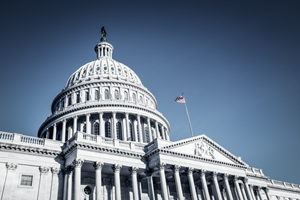On March 27, 2017, President Trump signed Executive Order (EO) 13782 that revoked former President Obama’s EO 13673 (the Fair Pay and Safe Workplaces Order), and several amendments in Section 3 of EO 13683 and EO 13738. EO 13782 was signed after Congress passed a joint resolution, using the Congressional Review Act, to revoke EO 13673.

The Obama EO made changes to the federal contract bidding process. According to White House press secretary Sean Spicer, “The rule simply made it too easy for trial lawyers to go after American companies and American workers who contract with the federal government.”
The Fair Pay and Safe Workplaces Order was signed into law on July 31, 2014. Subsequently, on August 25, 2016, the Department of Labor and the Federal Acquisition Regulatory (FAR) Council issued the final rules and guidance to implement the order. The rules required several changes to the federal contract bidding process:
- Disclosure of violations of 14 federal labor laws (including OSHA requirements), as well as equivalent state laws, that must be disclosed by contractors and also subcontractors working on covered contracts of $500,000 or more.
- Submission of written disclosures detailing whether a worker is an employee or independent contractor.
- Prohibiting federal contractors from requiring employees to use arbitration processes for workplace harassment claims.
- Requiring federal contracting officers to make an affirmative determination of a contractor’s compliance with the laws during the past 3 years.
Worker safety advocates supported the rule, and many businesses believed it leveled the playing field by ensuring that all companies bidding on federal contracts were investing the same resources and money into safety and wage compliance. However, opponents of the rule argued that its terms were too extreme and the threshold contract amount was too low, having an adverse effect on small businesses.
Proponents Position In Favor of the Rules
- Federal contractors employ a large portion of the workforce (up to 22%), therefore the impact is substantial.
- Federal contractors were violating OSHA and other DOL regulations and laws.
- Businesses that do not comply with DOL laws have an economic advantage over those that do.
Opponents Position Against the Rules
- The rules would result in job losses since many businesses would be eliminated from bidding or do not have the resources to invest in the additional requirements.
- Businesses are blacklisted by requiring public disclosure of internal information, for alleged violations of safety standards which is public shaming and violates due process,
- Small businesses are impacted disproportionality because the $500,000 threshold is too low and places undue burden on small businesses who lack the resources to comply with rule.
- Safety is a priority for federal contractors already.
- Federal contracting official is not trained to evaluate compliance.
For advocates, passage of the joint resolution sent a clear message that Congress and the administration are focused on business interests and not worker safety. For opponents, it indicates that overreaching and burdensome regulations will not be tolerated. It is noteworthy that the Congressional Review Act has only been used twice to remove a regulation, but we may see more use of it in the upcoming year.
Tina Stanczewski, Esq., is an associate attorney with the Law Office of Adele L. Abrams. Abrams is ASSE's federal representative. Stanczewski has a J.D. in Environmental Law and Public and Government Service from the University of Baltimore School of Law.
Originally published May 11, 2017.